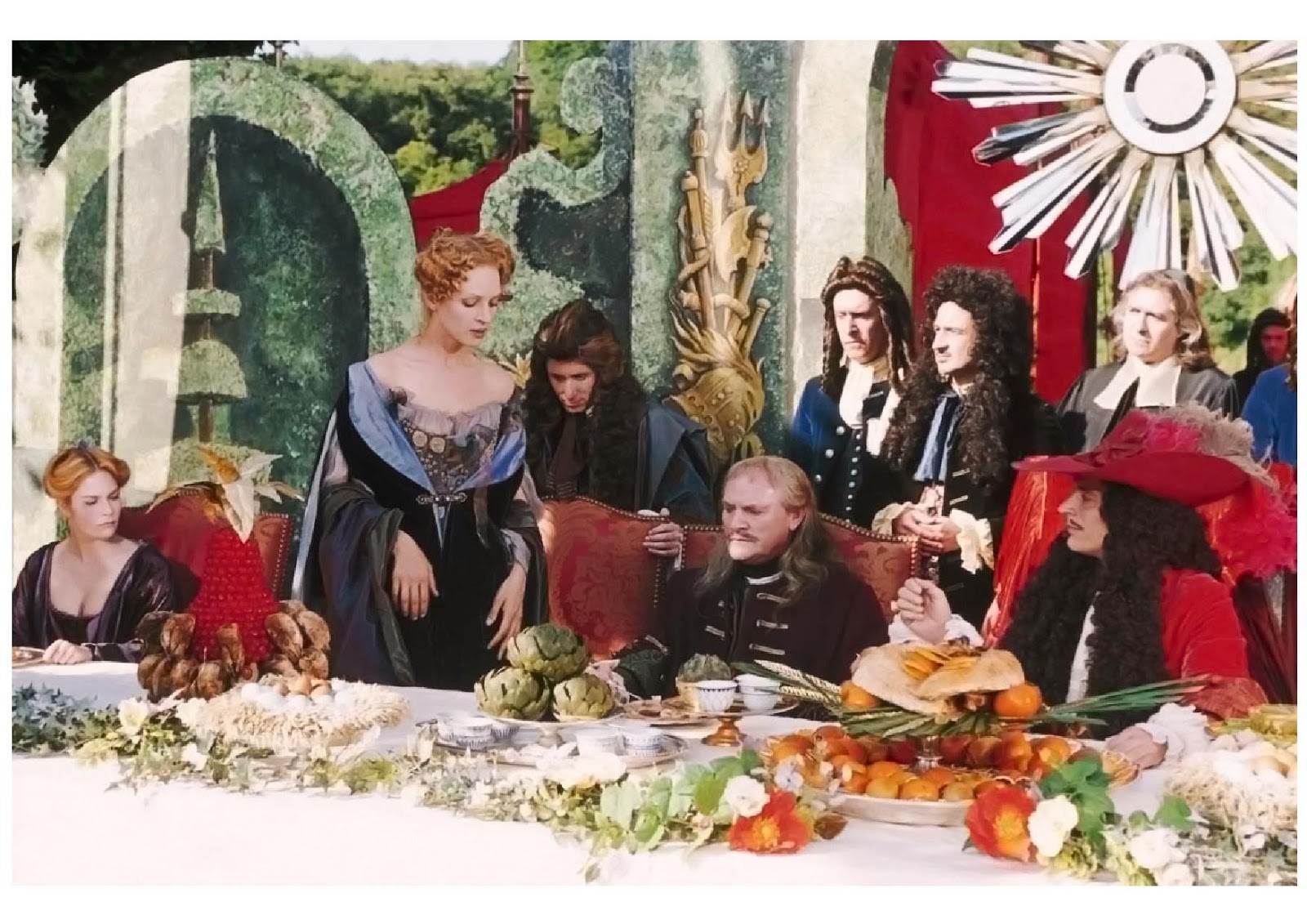MARIANI’S
Virtual
Gourmet
AUGUST
4, 2019
NEWSLETTER
❖❖❖
IN THIS ISSUE
ZÜRICH
By John Mariani
NEW YORK CORNER
SENSO UNICO
By John Mariani
NOTES FROM THE WINE CELLAR
By John Mariani
❖❖❖
ZÜRICH
By John Mariani

As
the largest city in Switzerland, Zürich spreads
out beyond its historic center and seems intent
on aggrandizing more of the outlying areas.
But, bisected by two rivers with graceful
bridges, it is a city without the bustle and
traffic of comparable European capitals. You
never get the sense of its citizens being in a
great rush, not least because they are assured
that all transport leaves and arrives frequently
and on time and because the Bahnhof train
station is a small city in itself to spend time
in.
 More than one survey
ranks Zürich as a city with the best quality of
life in the world, and like the rest of
Switzerland it enjoys an astonishing unemployment
rate of only 2.7% in a city of 380,000 people, 90%
working in the service sector, especially
financial, and there is now a large biotech and
medical industry in the city. Salaries are higher
than elsewhere in Europe, but the efficiency and
productivity of the city’s laborers make for low
non-wage labor costs.
More than one survey
ranks Zürich as a city with the best quality of
life in the world, and like the rest of
Switzerland it enjoys an astonishing unemployment
rate of only 2.7% in a city of 380,000 people, 90%
working in the service sector, especially
financial, and there is now a large biotech and
medical industry in the city. Salaries are higher
than elsewhere in Europe, but the efficiency and
productivity of the city’s laborers make for low
non-wage labor costs.
There has been an influx of
non-Swiss, many settling along neighborhoods
behind the main train station, while Langerstrasse
is 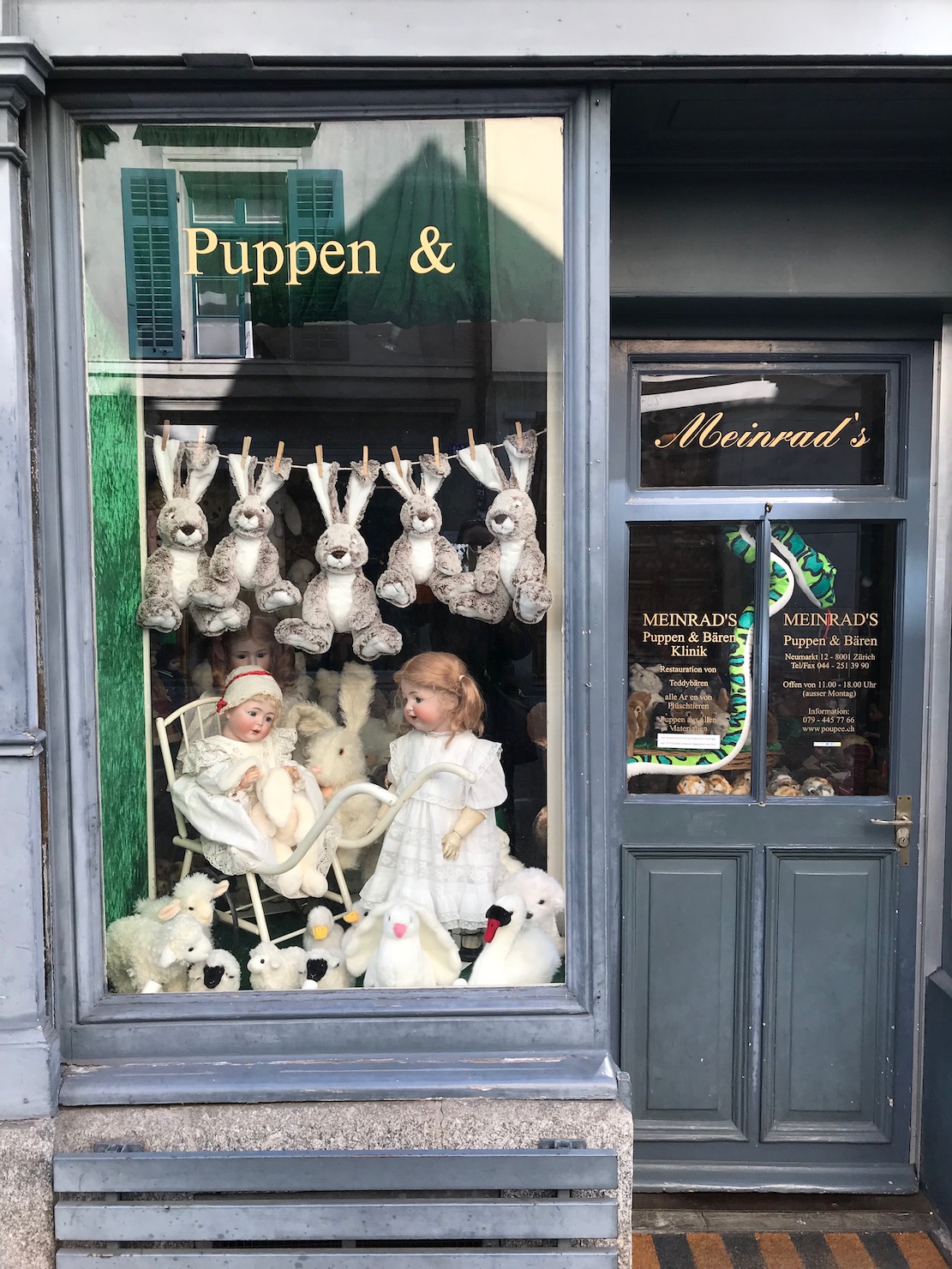 being built up with
modern businesses and apartments, bars and cafés.
According to Stadt
Zürich, “The city's housing market is
currently a source of tension, with many people
looking for apartments and having trouble finding
one in the City of Zürich.”
being built up with
modern businesses and apartments, bars and cafés.
According to Stadt
Zürich, “The city's housing market is
currently a source of tension, with many people
looking for apartments and having trouble finding
one in the City of Zürich.”
Banking is the backbone of the
city—stores of gold bullion lie underneath the
streets—with tourism right behind, and the lay-out
of the Old City along the banks of the Limnat
River, which supplies 70 percent of the city’s
drinking water, allows for good long walks from
Platzspitz Park and the magnificent Bahnhoff (above) to the
Quailbrücke bridge, where the river fans out into
Lake Zürich.
Along the west
bank walkways you’ll find small artisan shops for
gold and jewelry, local fashion designers and
numerous cafés. Farther away from the river,
Zürich expands into central shopping districts,
especially along Bahnhofstrasse, where, if you
care, all the international labels are to be
found.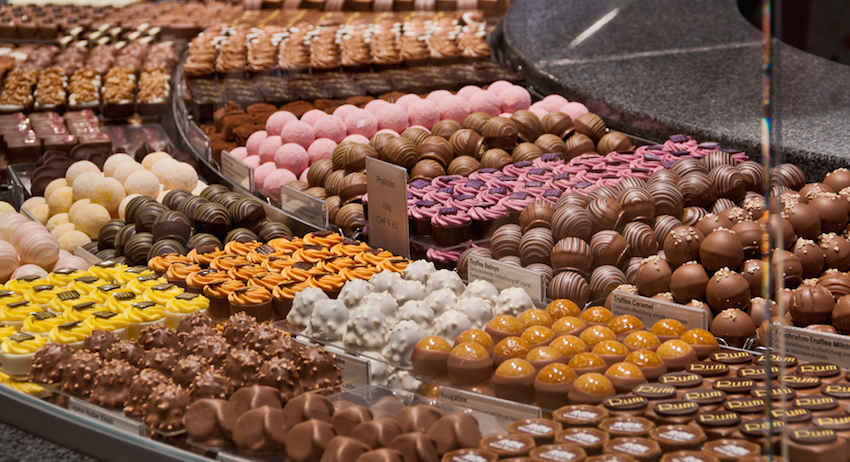 The east bank of the
river has a much younger vibe, the streets
chockablock with restaurants, bars, marijuana
shops, tattoo parlors, puppet and doll stores and
cheaper clothing stores. On several blocks around
town you’ll find Sprüngli chocolate and pastry
shops and restaurants (left)—there are six in town, not
counting at the train stations and airports—ideal
for breakfast, a quick lunch or a breather.
The east bank of the
river has a much younger vibe, the streets
chockablock with restaurants, bars, marijuana
shops, tattoo parlors, puppet and doll stores and
cheaper clothing stores. On several blocks around
town you’ll find Sprüngli chocolate and pastry
shops and restaurants (left)—there are six in town, not
counting at the train stations and airports—ideal
for breakfast, a quick lunch or a breather.
Churches occupy more blocks of
Zürich, and a few are  superb
examples, including the Church of St. Peter, added onto
over centuries in Romanesque, Gothic and Baroque
styles, with the largest four-faced clock in
Europe. After Catholics countered the Reformation,
they went all out at St. Peter with an interior of
flamboyant magnificence. More subdued but
esthetically pleasing is the Romanesque Grossmünster (right),
dating back to the 14th century, with its easily
recognizable twin towers—Richard Wagner called
them “salt and pepper shakers”—and intricately
carved portal. Founded originally by Charlemagne,
whose statue tops one tower, the church became the
principal venue from which Huyldrich Zwingli
launched the Swiss Reformation in 1519, and there
is a Reformation museum
in the cloister.
superb
examples, including the Church of St. Peter, added onto
over centuries in Romanesque, Gothic and Baroque
styles, with the largest four-faced clock in
Europe. After Catholics countered the Reformation,
they went all out at St. Peter with an interior of
flamboyant magnificence. More subdued but
esthetically pleasing is the Romanesque Grossmünster (right),
dating back to the 14th century, with its easily
recognizable twin towers—Richard Wagner called
them “salt and pepper shakers”—and intricately
carved portal. Founded originally by Charlemagne,
whose statue tops one tower, the church became the
principal venue from which Huyldrich Zwingli
launched the Swiss Reformation in 1519, and there
is a Reformation museum
in the cloister.
The Swiss National Museum, in two
attached Gothic buildings, is extremely rich
throughout, with important works from prehistory
and Roman eras as well as the Carolingian and
Renaissance periods. Art from 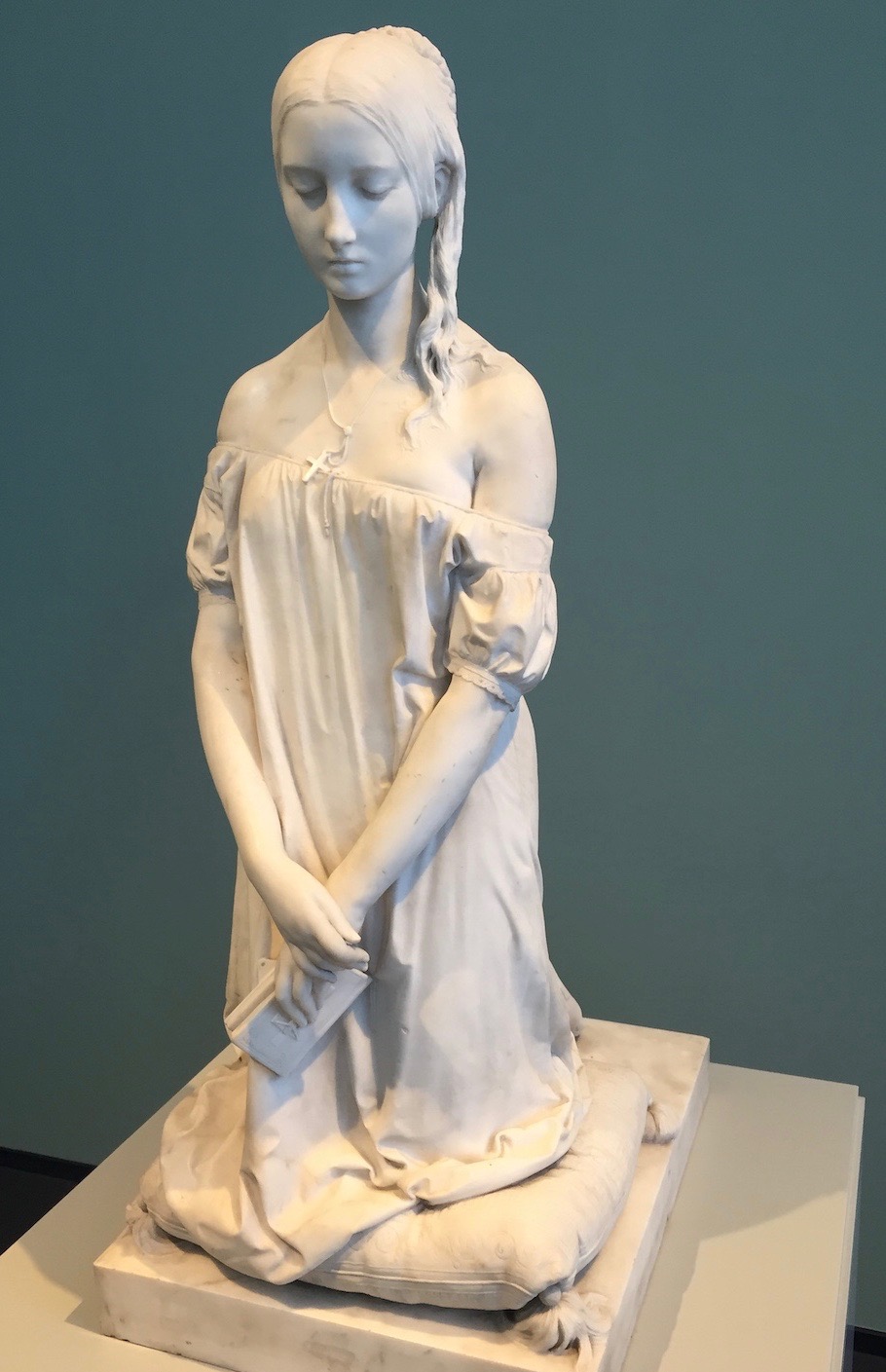 Asia is the
focus of the Rietberg
Museum, but I was most impressed by the
deep collection of modern art from the 19th
century at the Kuntshaus,
where you’ll find the largest number of Edvard
Munch paintings outside of Norway, a splendid
Monet water lily painting, a room of first-rate
Chagalls and another of the romantic artist Henry
Fuseli’s work, along with sculptures by Swiss
artist Alberto Giacometti. For
those with a taste for folklore, what is purported
to be a crossbow of hero William Tell, who may
never have existed, is on display at the
Zeughauskeller restaurant on the Bahnhofstrasse.
Asia is the
focus of the Rietberg
Museum, but I was most impressed by the
deep collection of modern art from the 19th
century at the Kuntshaus,
where you’ll find the largest number of Edvard
Munch paintings outside of Norway, a splendid
Monet water lily painting, a room of first-rate
Chagalls and another of the romantic artist Henry
Fuseli’s work, along with sculptures by Swiss
artist Alberto Giacometti. For
those with a taste for folklore, what is purported
to be a crossbow of hero William Tell, who may
never have existed, is on display at the
Zeughauskeller restaurant on the Bahnhofstrasse.
Zürich has a
thriving opera and ballet community, both
performing at the gleaming white and gray Opernhaus,
re-built in 1891 after a fire destroyed the
original. Though it had fallen into decrepitude,
it was restored to its current brilliance and has
seen its share of youth protests for presenting
too many German and Austrian works, probably
evoking the disfavor of Mozart, Weber and Wagner,
whose busts look down from the façade.
Next week I’ll report on Zürich’s best hotels and restaurants.
❖❖❖
By John Mariani
43-04 47th Avenue
Sunnyside, Queens
347-662-6101
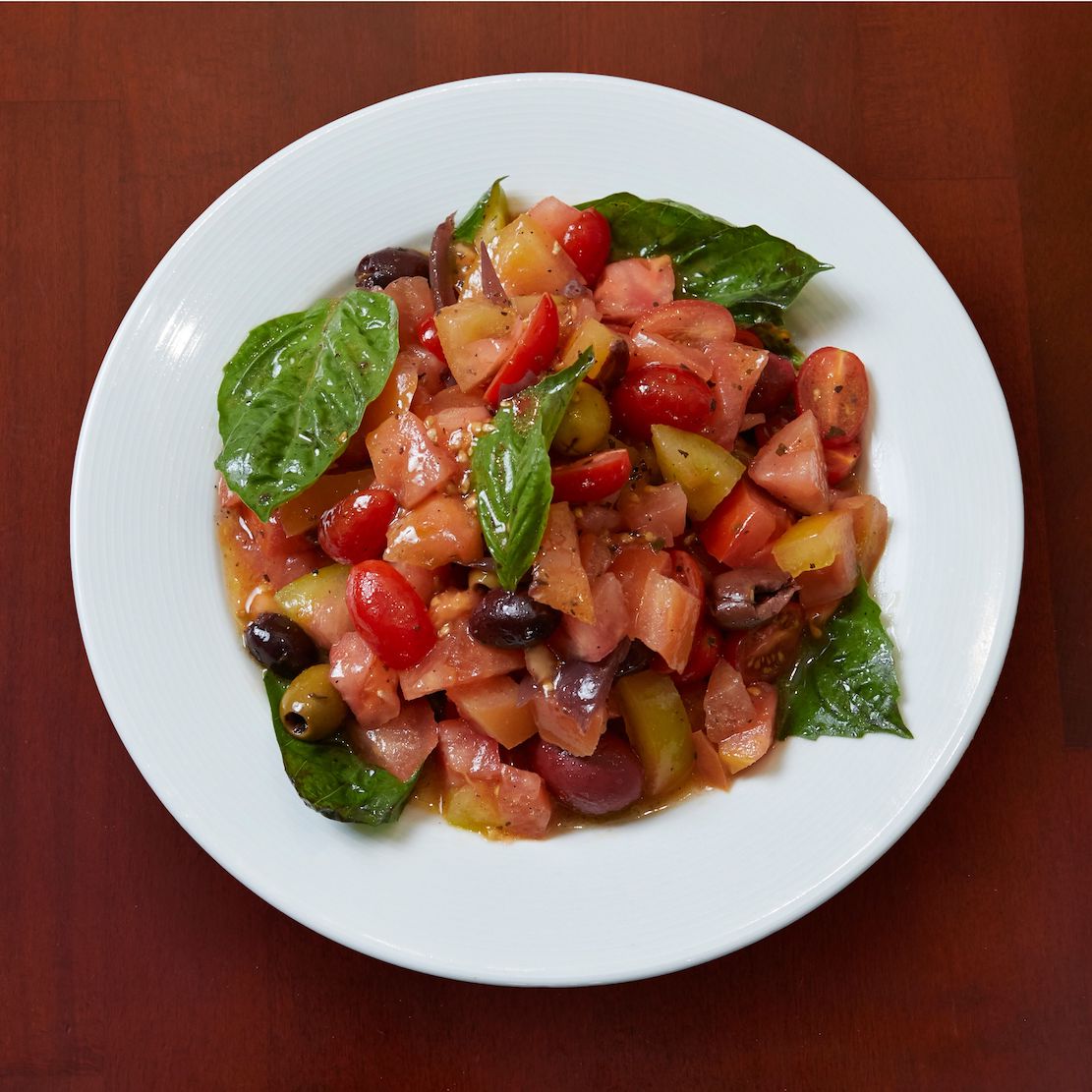
Having
run low on Cambodian snack bars, taco food
trucks and vegetarian burger stands in Brooklyn
to cover, the New York food media have turned
their sights on Queens in search of the same
kind of low-rent, small-menu eating places—all
of which well deserve coverage—while largely
ignoring more traditional, less trendy
restaurants.
It’s hard to remember when the media have
covered any Italian restaurants above the level
of a pizzeria. Here’s one thus far ignored that
deserves kudos galore.
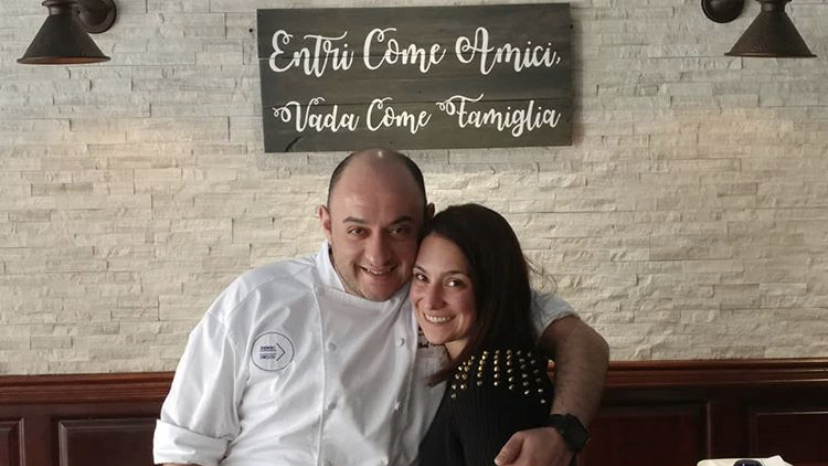 As an admirable labor of
love, Senso Unico—which means “one way” in Italian
with the additional meaning of doing things one
way, the right
way—is a corner osteria
that exudes good feelings and hospitality from the
moment you meet owner Laura Garofalo at the
doorway. She’s the wife of chef Vincenzo Garofalo,
whose long résumé includes time at notable
restaurants like Antica Osteria Nonna Rosa and Il
Pellicano in Italy, as well as a stint with the
Maccioni family at Sirio in New York. But his
most enduring and endearing influence is the
cooking of his grandmother.
As an admirable labor of
love, Senso Unico—which means “one way” in Italian
with the additional meaning of doing things one
way, the right
way—is a corner osteria
that exudes good feelings and hospitality from the
moment you meet owner Laura Garofalo at the
doorway. She’s the wife of chef Vincenzo Garofalo,
whose long résumé includes time at notable
restaurants like Antica Osteria Nonna Rosa and Il
Pellicano in Italy, as well as a stint with the
Maccioni family at Sirio in New York. But his
most enduring and endearing influence is the
cooking of his grandmother.
I love restaurants with a
corner entrance, and Senso Unico’s is particularly
inviting into a small, tidy, colorful room that
opens onto the street in the Queens neighborhood
of Sunnyside. A sign on the wall (left) in
Italian reads "Enter as friends, leave as family."
The food is alla famiglia,
and housemade pastas are the focus, but the
antipasti are not to be ignored. We began with cuoppo (below, right),
a plate of lightly fried,
crispy calamari, shrimp and mixed vegetables
($15). You can tell when a fresh, light oil is
used at the right temperature.
Vincenzo
is obviously manic about the seasonal freshness of
his ingredients, evident in the cherry and Roma
tomato salad with  Castelvetrano and Gaeta
olives, pickled onion, basil and—surprise!—a
splash of Campari ($11). A fine beef carpaccio had
shreds of peppery arugula, shaved parmigiano and a
tangy lemon dressing ($14), and it was so good to
see an old Italian-American favorite, prosciutto
and melon, served; the melon was succulently ripe
and very sweet, the prosciutto draped in
feather-weight slices, with a delightful,
unexpected pistachio dressing ($12). Also
dependent on absolute freshness was a carpaccio of
sea scallops with capers, cantaloupe, pink
peppercorn, a dash of fresh chili and lemon oil
($14).
Castelvetrano and Gaeta
olives, pickled onion, basil and—surprise!—a
splash of Campari ($11). A fine beef carpaccio had
shreds of peppery arugula, shaved parmigiano and a
tangy lemon dressing ($14), and it was so good to
see an old Italian-American favorite, prosciutto
and melon, served; the melon was succulently ripe
and very sweet, the prosciutto draped in
feather-weight slices, with a delightful,
unexpected pistachio dressing ($12). Also
dependent on absolute freshness was a carpaccio of
sea scallops with capers, cantaloupe, pink
peppercorn, a dash of fresh chili and lemon oil
($14).
And so, on to the delicately
wrought pastas at Senso Unico. Spaghetti with
plum, cherry, and Roma tomato sauce was the
essence of summer in a bowl ($24), as was the scialatielli
alla Nerano, a fat form of spaghetti with
green and yellow squash, basil 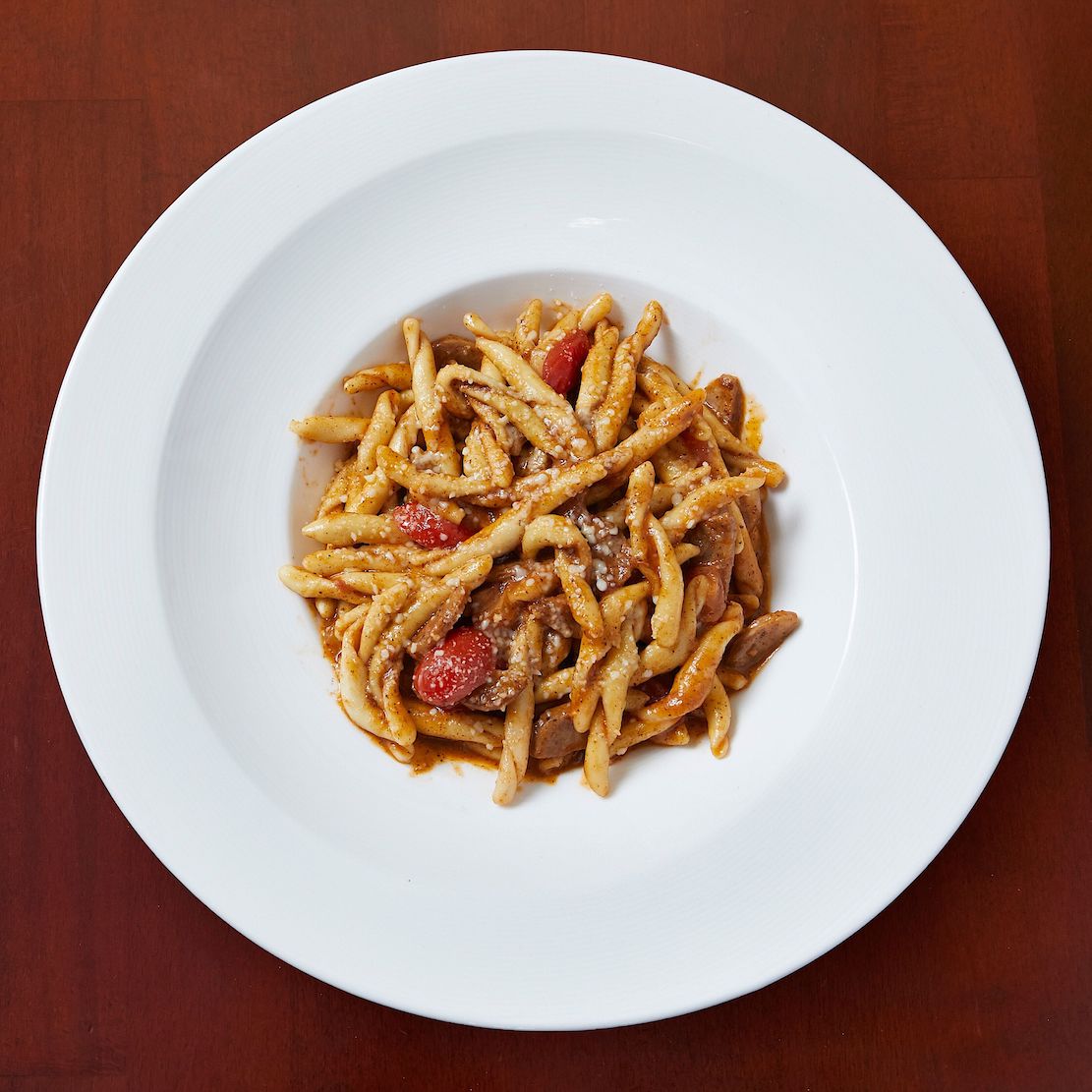 butter and Parmigiano ($24). Spaghetti
with the small vongole
clams in their shells seems a simple dish, but
getting the balance of the white wine, tomatoes
and salsa
verde takes canny timing, and Vincenzo’s got
his down pat ($17). The heartiest of the pastas I
sampled was fusilli
Avellinesi (left), made with sweet Italian
sausage, tomato and a truffle sauce ($19).
Portions are very generous.
butter and Parmigiano ($24). Spaghetti
with the small vongole
clams in their shells seems a simple dish, but
getting the balance of the white wine, tomatoes
and salsa
verde takes canny timing, and Vincenzo’s got
his down pat ($17). The heartiest of the pastas I
sampled was fusilli
Avellinesi (left), made with sweet Italian
sausage, tomato and a truffle sauce ($19).
Portions are very generous.
As
requisite as the pastas are, there are some good secondi on
the
menu, including a tagliata cut
of beef with mixed grilled vegetables ($36); a
nicely crisp and juicy Cornish hen with roasted
potatoes and brown butter-rosemary sauce ($26); an
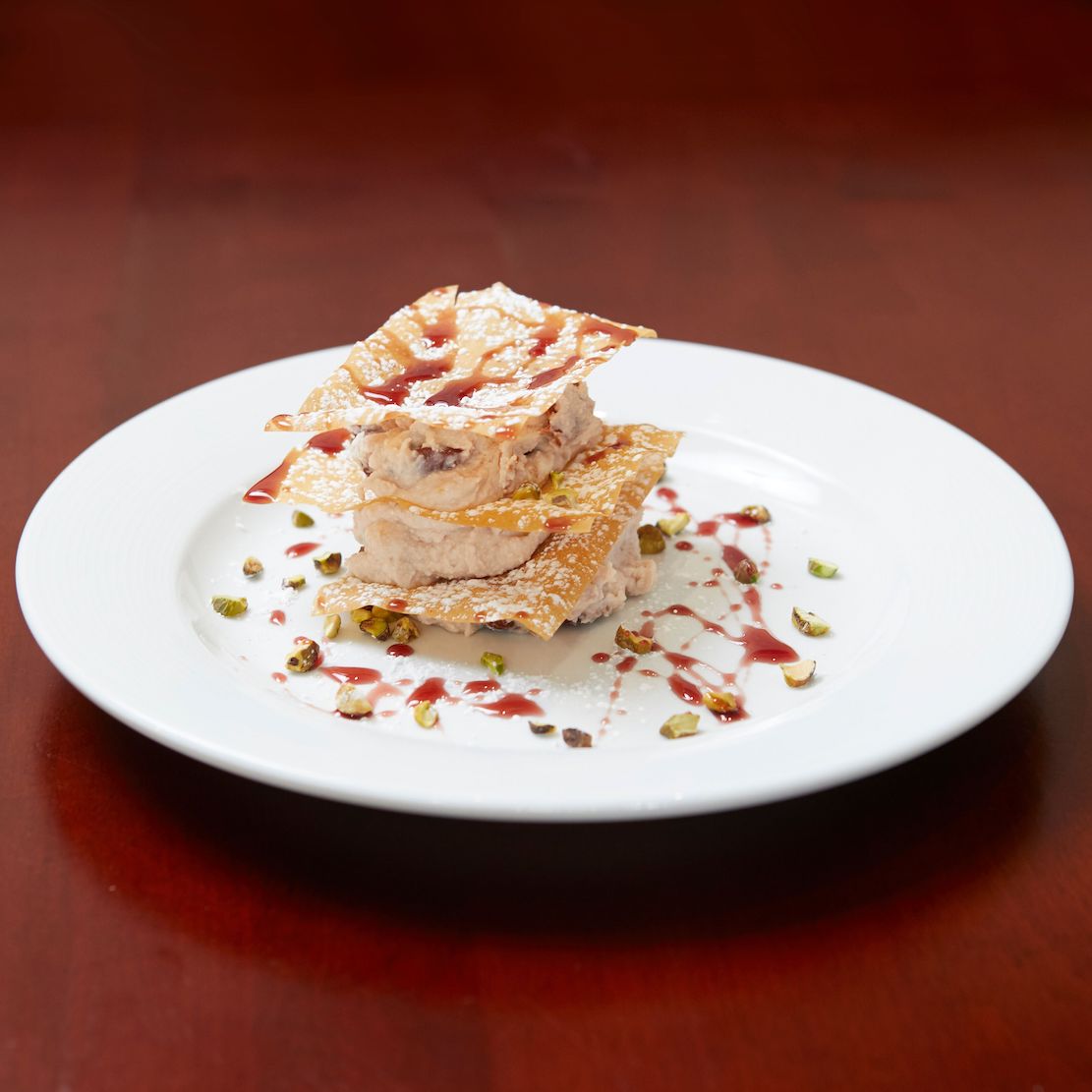 eggplant parmigiana
($15) so good that the old-fashioned dish deserves
to be brought back to eminence; and branzino al
cartoccio that was exceptionally succulent,
steamed and baked with zucchini, yellow squash,
cherry tomato and white wine sauce ($26).
eggplant parmigiana
($15) so good that the old-fashioned dish deserves
to be brought back to eminence; and branzino al
cartoccio that was exceptionally succulent,
steamed and baked with zucchini, yellow squash,
cherry tomato and white wine sauce ($26).
I didn’t really expect that
Vincenzo would make his own desserts, but, of
course, he does, and his classic tiramisù
($6)—another version with beer is merely odd— and
flakey puff pastry napeolon (right) with
amarena cherries ($9) are expertly made. The
refreshing dish called affogato (“drowned”),
made by pouring chocolate sauce and espresso over
vanilla ice cream ($6), is always going to be a
simple pleasure, and I haven’t tasted a zabaglione
with vin
cotto, glazed berries and vanilla gelato
($8) this good in a very long while.
For anyone who lives in
those other
boroughs or drives to Queens for Mets
game or US Open, Senso Unico is well worth the
price of a subway or Uber fare or a drive. The
people of Queens have already found out how lucky
they are to have the Garofalos cooking for them.
Senso Unico is open for lunch Fri. & Sat., and for dinner Tues.-Sun.
❖❖❖
WHAT I'M DRINKING
THIS SUMMER
By John Mariani

I
always taste new bottlings in the market
with food, never on their own in a sterile
atmosphere. Food buoys wine and vice-versa,
so, depending on what I’m eating this long,
hot summer, I choose my wines with a view to
their potential for good marriages. Here are
some very good ones.
LA CREMA
WILLAMETTE VALLEY PINOT NOIR 2016 ($30)—It
was a stifling July evening with pizzas and lamb
chops cooked  over a
charcoal fire. I reduced the temperature of this
Oregon Pinot Noir to a reasonable 60 degrees,
and it was both refreshing with the pizza, whose
Gorgonzola cheese and sweet onions needed a red
wine, and a good mineral match with the nicely
fatted lamb on the bone, all at a very good
price for a party of people.
over a
charcoal fire. I reduced the temperature of this
Oregon Pinot Noir to a reasonable 60 degrees,
and it was both refreshing with the pizza, whose
Gorgonzola cheese and sweet onions needed a red
wine, and a good mineral match with the nicely
fatted lamb on the bone, all at a very good
price for a party of people.
SANTOLA VINHO VERDE
($6 to $10)—In Portugal Vinho Verde is an
everyday wine that is drunk with abandon—it’s
only got 9% alcohol. Very often, like this
bottle, there isn’t even a vintage listed on the
label, though you be sure it came from 2018.
Nevertheless, like Portuguese wines in general,
Vinho Verdes are both improving and showing
variety, usually with a tinge of fizz. This one
is on the drier side. With soft shell crabs and
sautéed tilefish, it was just what I wanted to
drink. At these prices, buy ‘em by the case!
JOSEPH DROUHIN PULIGNY-MONTRACHET
FOLATIÈRES 2013 ($116)—When I buy
lobster for dinner I know I’m always going to
want a great white Burgundy like this
Puligny-Montrachet by Drouhin. The lobster,
especially with melted butter, needs a rich
component, and this Chardonnay-based wine has
layers of flavor and just enough acid to be
wholly complementary to the crustacean’s
luscious, creamy flavor. The grapes are pressed
very slowly, without yeasts or enzymes, and the
last pressings are not used. After decanting the
wine goes directly into  French
oak barrel, where they spend a year. It’s now
six years old, showing the power and aging
potential of these Burgundy whites.
French
oak barrel, where they spend a year. It’s now
six years old, showing the power and aging
potential of these Burgundy whites.
RICASOLI CHIANTI
CLASSICO RONCIONE GRAN SELEZIONE 2015 ($85);
COLLEDILÀ CHIANTI CLASSICO GRAN
SELEZIONE 2015 ($70); CENIPRIMO CHIANTI
CLASSICO SELEZIONE 2015 ($85)—Readers
of these columns well know my affection for
Chianti Classicos, though I didn’t expect them
to be at these prices. Worth it? Yes, because
while they retain the Sangiovese flavors that
distinguish these Tuscan beauties, they also
edge towards the heights of the best Brunellos
and estates like Ornellaia and Sassicaia.
Ricasoli has been at the job since 1872, and in
fact pioneered the composition of what we know
as Chianti. These three current examples are all
100% Sangiovese: The Colledilà (which means the
“other side of the hill”) comes from a calcium
rich soil, so you taste that minerality; the
Roncione gives you a rush of fruit up front that
is calmed by a good acidity underneath to goes
on to a long, satisfying finish; the CeniPrimo,
a half-percent higher in alcohol at 14.5% than
the others, has marvelous color and depth with
finesse, too, and a longer finish. It’s from the
smallest of the Ricasoli estates, with only six
acres, and grapes are hand harvested. The
tannins are still loosening up, but right now it
went impeccably with a plate of spaghetti with a
pesto
basil, garlic, pine nut sauce.
LYNDENHURST CABERNET
SAUVIGNON 2015 ($85)—I buy my
well-marbled ribeyes cut about two inches thick;
indoors, my wife sears them in a cast iron
skillet then sticks them in a hot oven for five
minutes. In summer, on the charcoal grill, that
sear gets darker and crustier, so a big
California Napa Valley Cabernet is requisite,
but not one so high in alcohol as to blunt the
enjoyment after one glass. This
one reaches only 14.4% alcohol, and the fat of
the ribeye and the big fruit and light oak
flavors mingle magnificently.
❖❖❖
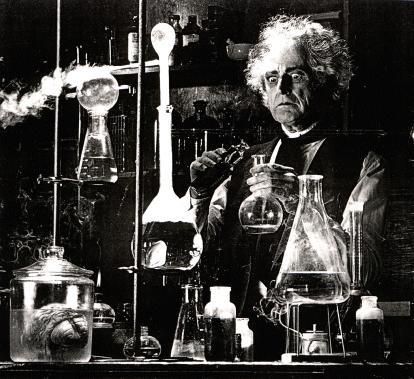
FURTHER SIGNS OF THE
DECLINE OF CIVILIZATION
Bay Area-based biotech start-up Perfect Day,
founded by vegan bioengineers Ryan Pandya
and Perumal Gandhi, are now producing ice cream in
the lab made from whey protein produced by
genetically modified yeast rather than by cows.
OH,PUH-LEEZE!
"Rhodes and his wife and co-owner, Chana Rhodes, aim to
challenge systemic
racism
and oppression in
America
with their restaurant. Rhodes delivers monologues
between courses on weighty topics ranging from mass
incarceration to the Great Migration, but even
without them, Indigo’s very existence is part of the
work: a fine dining restaurant in a historically
underserved neighborhood, serving food that
unabashedly claims its purpose. In a more equitable
dining culture, none of this would be revolutionary,
but today it is; diners simply don’t see restaurants
like this very often."-- Hillary Dixler
Canavan, "Beach Side Cafe," Eater.com.
❖❖❖
Any of John Mariani's books below may be ordered from amazon.com.
 The Hound in Heaven
(21st Century Lion Books) is a novella, and
for anyone who loves dogs, Christmas, romance,
inspiration, even the supernatural, I hope you'll find
this to be a treasured favorite. The story
concerns how, after a New England teacher, his wife and
their two daughters adopt a stray puppy found in their
barn in northern Maine, their lives seem full of promise.
But when tragedy strikes, their wonderful dog Lazarus and
the spirit of Christmas are the only things that may bring
his master back from the edge of despair.
The Hound in Heaven
(21st Century Lion Books) is a novella, and
for anyone who loves dogs, Christmas, romance,
inspiration, even the supernatural, I hope you'll find
this to be a treasured favorite. The story
concerns how, after a New England teacher, his wife and
their two daughters adopt a stray puppy found in their
barn in northern Maine, their lives seem full of promise.
But when tragedy strikes, their wonderful dog Lazarus and
the spirit of Christmas are the only things that may bring
his master back from the edge of despair. WATCH THE VIDEO!
“What a huge surprise turn this story took! I was completely stunned! I truly enjoyed this book and its message.” – Actress Ali MacGraw
“He had me at Page One. The amount of heart, human insight, soul searching, and deft literary strength that John Mariani pours into this airtight novella is vertigo-inducing. Perhaps ‘wow’ would be the best comment.” – James Dalessandro, author of Bohemian Heart and 1906.
“John Mariani’s Hound in Heaven starts with a well-painted portrayal of an American family, along with the requisite dog. A surprise event flips the action of the novel and captures us for a voyage leading to a hopeful and heart-warming message. A page turning, one sitting read, it’s the perfect antidote for the winter and promotion of holiday celebration.” – Ann Pearlman, author of The Christmas Cookie Club and A Gift for my Sister.
“John Mariani’s concise, achingly beautiful novella pulls a literary rabbit out of a hat – a mash-up of the cosmic and the intimate, the tragic and the heart-warming – a Christmas tale for all ages, and all faiths. Read it to your children, read it to yourself… but read it. Early and often. Highly recommended.” – Jay Bonansinga, New York Times bestselling author of Pinkerton’s War, The Sinking of The Eastland, and The Walking Dead: The Road To Woodbury.
“Amazing things happen when you open your heart to an animal. The Hound in Heaven delivers a powerful story of healing that is forged in the spiritual relationship between a man and his best friend. The book brings a message of hope that can enrich our images of family, love, and loss.” – Dr. Barbara Royal, author of The Royal Treatment.
 |
The Encyclopedia of American Food and Drink by John F. Mariani (Bloomsbury USA, $35) Modesty forbids me to praise my own new book, but let me proudly say that it is an extensive revision of the 4th edition that appeared more than a decade ago, before locavores, molecular cuisine, modernist cuisine, the Food Network and so much more, now included. Word origins have been completely updated, as have per capita consumption and production stats. Most important, for the first time since publication in the 1980s, the book includes more than 100 biographies of Americans who have changed the way we cook, eat and drink -- from Fannie Farmer and Julia Child to Robert Mondavi and Thomas Keller. "This book is amazing! It has entries for everything from `abalone' to `zwieback,' plus more than 500 recipes for classic American dishes and drinks."--Devra First, The Boston Globe. "Much needed in any kitchen library."--Bon Appetit. |
"Eating Italian will never be the same after reading John Mariani's entertaining and savory gastronomical history of the cuisine of Italy and how it won over appetites worldwide. . . . This book is such a tasteful narrative that it will literally make you hungry for Italian food and arouse your appetite for gastronomical history."--Don Oldenburg, USA Today. "Italian
restaurants--some good, some glitzy--far
outnumber their French rivals. Many of
these establishments are zestfully described
in How Italian Food Conquered the World, an
entertaining and fact-filled chronicle by
food-and-wine correspondent John F.
Mariani."--Aram Bakshian Jr., Wall Street
Journal.
"Equal parts
history, sociology, gastronomy, and just
plain fun, How Italian Food Conquered the
World tells the captivating and delicious
story of the (let's face it) everybody's
favorite cuisine with clarity, verve and
more than one surprise."--Colman Andrews,
editorial director of The Daily
Meal.com. "A fantastic and fascinating
read, covering everything from the influence
of Venice's spice trade to the impact of
Italian immigrants in America and the
evolution of alta cucina. This book will
serve as a terrific resource to anyone
interested in the real story of Italian
food."--Mary Ann Esposito, host of PBS-TV's
Ciao
Italia. "John Mariani has written the
definitive history of how Italians won their
way into our hearts, minds, and
stomachs. It's a story of pleasure over
pomp and taste over technique."--Danny Meyer,
owner of NYC restaurants Union Square
Cafe, The Modern, and Maialino.
|
 |
 |
 |
 |
 |
 |
 |
 |
 Everett Potter's Travel Report:
Everett Potter's Travel Report: 
 Eating Las Vegas
JOHN CURTAS has been covering the Las Vegas
food and restaurant scene since 1995. He is
the co-author of EATING LAS VEGAS – The 50
Essential Restaurants (as well as
the author of the Eating Las Vegas web site: www.eatinglasvegas.
He can also be seen every Friday morning as
the “resident foodie” for Wake Up With the
Wagners on KSNV TV (NBC) Channel 3 in
Las Vegas.
Eating Las Vegas
JOHN CURTAS has been covering the Las Vegas
food and restaurant scene since 1995. He is
the co-author of EATING LAS VEGAS – The 50
Essential Restaurants (as well as
the author of the Eating Las Vegas web site: www.eatinglasvegas.
He can also be seen every Friday morning as
the “resident foodie” for Wake Up With the
Wagners on KSNV TV (NBC) Channel 3 in
Las Vegas.
MARIANI'S VIRTUAL GOURMET
NEWSLETTER is published weekly. Publisher: John Mariani. Editor: Walter Bagley. Contributing Writers: Christopher Mariani,
Robert Mariani, Misha Mariani, John A. Curtas, Gerry Dawes, Geoff Kalish,
and Brian Freedman. Contributing
Photographer: Galina Dargery. Technical
Advisor: Gerry
McLoughlin.
If you wish to subscribe to this
newsletter, please click here: http://www.johnmariani.com/subscribe/index.html
© copyright John Mariani 2019
